The Economics and Statistics Division maintains archives of previous publications for accountability purposes, but makes no updates to keep these documents current with the latest data revisions from Statistics Canada. As a result, information in older documents may not be accurate. Please exercise caution when referring to older documents. For the latest information and historical data, please contact the individual listed to the right.
<--- Return to Archive
For additional information relating to this article, please contact:
December 20, 2017JOB VACANCIES, SEPTEMBER 2017 In the 3 months ending in September 2017, there were an average of 6,400 job vacancies in Nova Scotia (unadjusted for seasonality). This is 1,800 higher than reported in the same month of 2016.
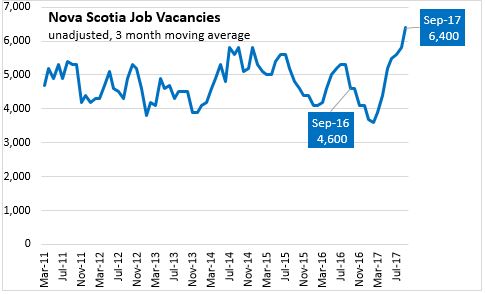
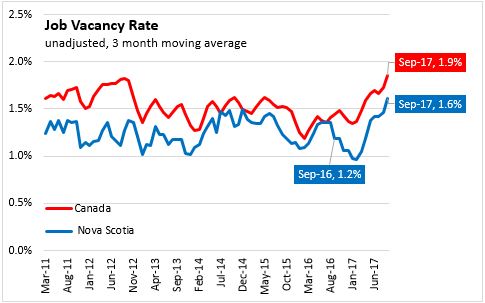
Nova Scotia's job vacancy rate, the share of labour demand that is unfilled, was 1.6 per cent in September, up from the 1.5 per cent reported in August. The job vacancy rate has risen since early 2017, signaling a tighter labour market in Nova Scotia, following a decline through the second half of 2016. As the data are not adjusted for seasonality, some of this tightness in the labour market may be a seasonal phenomenon. The data series is relatively new - summer labour market tightness also appeared in 2015 and 2016.
Across Canada, Job vacancy rates are highest in British Columbia (2.3 per cent), and lowest in Newfoundland and Labrador (1.2 per cent). The vacancy rates are up compared with the same month of 2016 in all provinces except Manitoba (where they were stable).
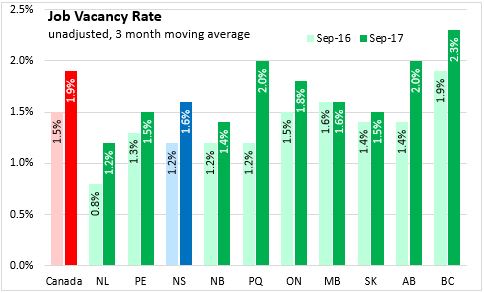
There were an average of 6.4 unemployed persons per job vacancy in Nova Scotia in the 3 months ending in September, down from 7.1 in the three months leading up to August.
After increasing through late 2016, the ratio of unemployment-to-job-vacancy has been lower in recent months compared to early 2017, sending signs of tightening in Nova Scotia's labour market. However, this also appears to be an emerging seasonal trend as the ratio is similar to levels reported in mid-2016.
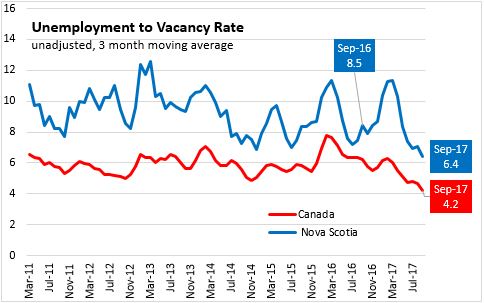
All provinces report fewer unemployed persons per job vacancy in September 2017 compared with the same month last year. British Columbia currently reports the tightest labour market conditions in Canada, with a job vacancy rate of 2.3 per cent and just 2.8 unemployed persons for each job vacancy. Newfoundland and Labrador reported the labour market conditions signaling the most slack.
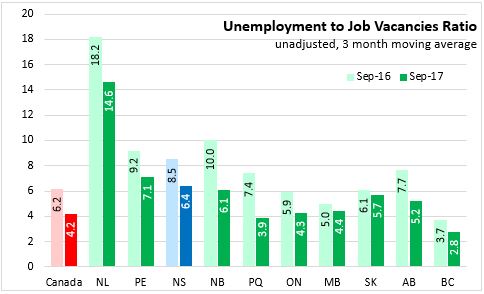
Source: Statistics Canada's Job Vacancies. CANSIM 284-0001 and 284-0003
<--- Return to Archive